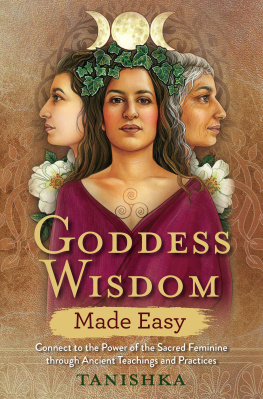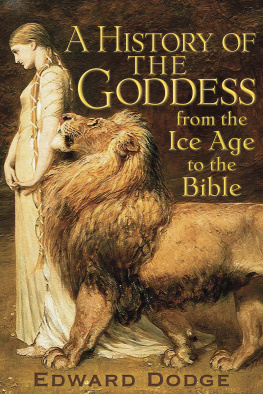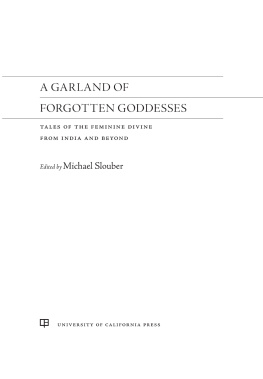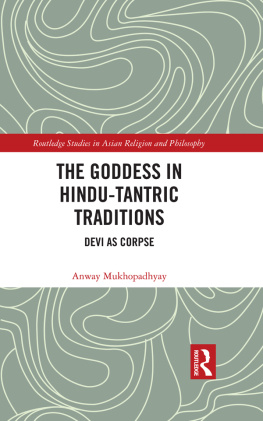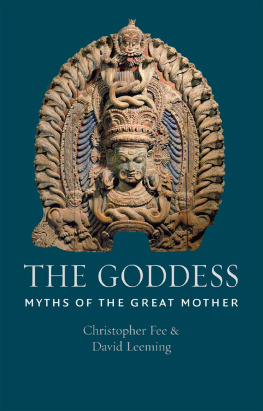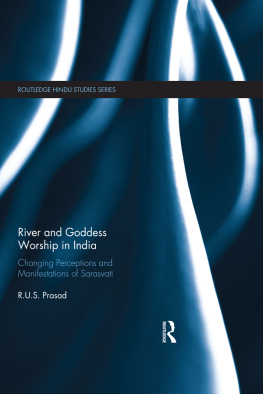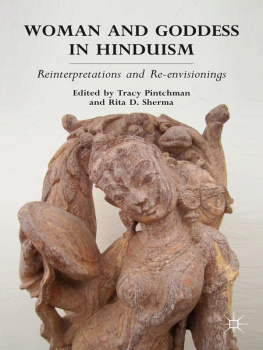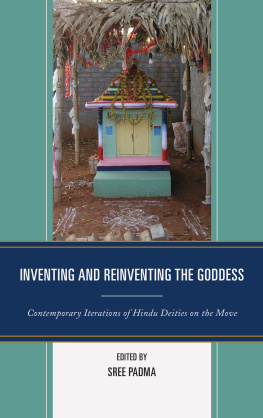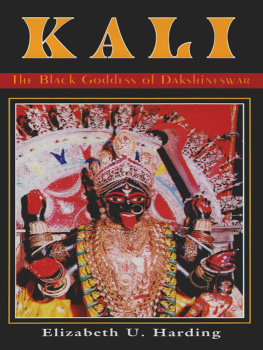Goddess Traditions in Tantric Hinduism
Hinduism cannot be understood without the Great Goddess and the goddessorientated kta traditions. The Goddess pervades Hinduism at all levels, from aniconic village deities to high-caste pan-Hindu goddesses to esoteric, tantric goddesses. Nevertheless, the highly influential tantric forms of South Asian goddess worship have only recently begun to draw scholarly attention. This book addresses the increasing interest in the Great Goddess and the tantric traditions of India by exploring the history, doctrine and practices of the kta tantric traditions.
Tantric forms of South Asian goddess worship form a major part of what is known as ktism, and is often considered one of the major branches of Hinduism next to aivism, Vaiavism and Smrtism. ktism is, however, less clearly defined than the other major branches, and the book looks at the texts of the kta traditions that constitute the primary sources for gaining insights into the kta religious imaginaire, ritual practices and history. It provides an historical exploration of distinctive Indian ways of imagining God as Goddess, and surveys the important origins and developments within kta history, practice and doctrine in its diversity.
Bringing together contributions from some of the foremost scholars in the field of tantric studies, the book provides a platform for the continued research into Hindu goddesses, yoga, and tantra for those interested in understanding the religion and culture of South Asia.
Bjarne Wernicke Olesen is a Fellow at the Oxford Centre for Hindu Studies, UK, and a teacher of classical South Asian languages and religions at Aarhus University, Denmark. He is the director of the kta Traditions research project together with Gavin Flood, University of Oxford.
Routledge Studies in Tantric Traditions
Series Editor: Professor Gavin Flood, University of Oxford
The Routledge Studies in Tantric Traditions series is a major new monograph series which has been established to publish scholarship on South, East, and Southeast Asian tantric tradition The series aims to promote the serious study of both Hindu and Buddhist tantric traditions through the publication of anthropological and textual studies and will not be limited to any one method. Indeed, the series would hope to promote the view that anthropological studies can be informed by texts and textual studies informed by anthropology. The series will therefore publish contemporary ethnographies from different regions, philological studies, philosophical studies, and historical studies of different periods which contribute to the academic endeavor to understand the role of tantric texts and their meaning in particular cultural context In this way, the series will hope to establish what the continuities and divergencies are between Buddhist and Hindu tantric traditions, and between different region The series will be a major contribution to the fields of Indology, Sinology, History of Religions, and Anthropology.
Identity, Ritual and State in Tibetan Buddhism
Martin A. Mills
The Khecarvidy of dintha
A critical edition and annotated translation of an early text of hahayoga
James Mallinson
An Introduction to Tantric Philosophy
The Paramrthasra of Abhinavagupta and its Commentary by Yogarja
Lyne Bansat-Boudon and Kamalesha Datta Tripathi
Tantric Mantras
Studies on mantrasastra
Andre Padoux
Tantric Visual Culture
A Cognitive Approach
Sthaneshwar Timalsina
Goddess Traditions in Tantric Hinduism
History, practice and doctrine
Edited by Bjarne Wernicke Olesen
Goddess Traditions in Tantric Hinduism
History, practice and doctrine
Edited by
Bjarne Wernicke Olesen

First published 2016
by Routledge
2 Park Square, Milton Park, Abingdon, Oxon OX14 4RN
and by Routledge
711 Third Avenue, New York, NY 10017
Routledge is an imprint of the Taylor & Francis Group, an informa business
2016 selection and editorial material, Bjarne Wernicke Olesen; individual chapters, the contributors
The right of Bjarne Wernicke Olesen to be identified as author of the editorial material, and of the individual authors as authors of their contributions, has been asserted by them in accordance with sections 77 and 78 of the Copyright, Designs and Patents Act 1988.
All rights reserved. No part of this book may be reprinted or reproduced or utilised in any form or by any electronic, mechanical, or other means, now known or hereafter invented, including photocopying and recording, or in any information storage or retrieval system, without permission in writing from the publisher
Trademark notice: Product or corporate names may be trademarks or registered trademarks, and are used only for identification and explanation without intent to infringe.
British Library Cataloguing in Publication Data
A catalogue record for this book is available from the British Library
Library of Congress Cataloging in Publication Data
Olesen, Bjarne Wernicke, author.
Goddess traditions in Tantric Hinduism: history, practice and doctrine/ Bjarne Wernicke Olese
pages cm. (Routledge studies in tantric traditions)
Includes bibliographical reference
1. TantrismHistory. 2. Hindu goddessesHistory. I. Title.
BL1283.83.I54 2015
294.52114dc23
2015004295
ISBN: 978-1-138-82334-1 (hbk)
ISBN: 978-1-315-74212-0 (ebk)
Figures
Tables
Mikael Aktor is Associate Professor of History of Religions at the Institute of Philosophy, Education and the Study of Religions, University of Southern Denmark. He holds a PhD from the University of Copenhagen, a part of which was carried out at the School of Oriental and African Studies, London University. His field of expertise is within the study of Dharmastra, in particular with a focus on caste and untouchability. He is presently engaged in a research of North Indian aiva temple ritual and temple sculpture as part of a general interest in ritual studies and religious aesthetic
Gavin Flood is a renowned Professor of Hindu Studies and Comparative Religion at the University of Oxford with a specialization in aivism and phenomenology and with research interests that span South Asian tradition Since 2005 he has been the Academic Director of the Oxford Centre for Hindu Studies, which is a Recognised Independent Centre of the University of Oxfor He is the author of the acclaimed An Introduction toHinduism. His other publications include: Body and Cosmology in KashmirSaivism and Beyond Phenomenology: Rethinking the Study of Religion. He is also Editor of the Blackwell Companion to Hinduism.
[John] Rich[ardson] Freeman is a cultural anthropologist with a background and research interest in Indology (Sanskrit and Dravidian languages and literatures). He currently teaches courses on Indian civilization, Hinduism, and the anthropology of religion for the faculties of History and Religion at Duke University, USA. His special area of research is Kerala, where he has carried out many years of ethnographic and textual work on the Teyyam traditions of spirit possession in Malabar, the wider regions Brahmanical system of temple worship, and the literary history of Malayalam in its cultural relations with Sanskrit and Tamil.
Shaman Hatley (Concordia University, Montral), researches the literature, ritual, and social history of Tantric aivism in medieval India, and religion in premodern Bengal. Hatleys dissertation,
Next page

